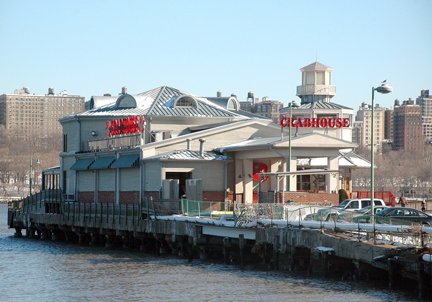Emergence of an Unlikely ‘Hero’
The “Excess Earnings Method”

“Appraisers have long recognized that a successful business operation has value beyond the value of real and personal property.”
Brian A. Glanville, 2001
President of the Appraisal Institute.
Because restaurants are commonly sold as real estate dependent business going concerns, the traditional real estate appraisal techniques on their own frequently do not mimic the decision-making processes of the market.
This disconnect between the traditional real estate appraisal techniques and property types like restaurants that commonly are transacted on the basis of their value as business going concerns, has for decades led to confusion. Frequently, the resulting valuation conclusions are more appropriately termed going concern values, and fail to recognize or acknowledge the contributory value of the other tangible and intangible business assets. Going concern value is the value of a proven property operation.
A “New” Appraisal Tool
A tool to assist in overcoming the challenges faced by the traditional real estate appraisal techniques for these real estate-centered business enterprises emerged from a surprising source: an old business valuation technique that was developed by the US Treasury Department in 1920 to address the unique business valuation challenge posed at that time as a result of Prohibition. The valuation challenge at that time? To estimate lost intangible value suffered by breweries and distilleries as a result of the new legislation.
Fundamentally, this technique recognizes that each of the factors of production must be paid, and that each component can be valued by capitalizing the earnings that can be attributed to that asset. This technique was initially embraced by the business valuation community for many years, particularly for the appraisal of small businesses. However, its weakness for business valuations was the lack of empirical evidence to support many of the required assumptions. In contrast, with its application to real estate centered businesses, there is often adequate market data available to independently develop and reconcile the value conclusions using several metrics.
A 1997 Appraisal Journal article entitled “Defining and Allocating Going-Concern Value Components”, by T. Alvin Mobley III appears to have been the catalyst that brought this business valuation technique to the attention of the real estate appraisal industry. This article was reprinted in 2001 by David C. Lennhoff, MAI, CRE in the first edition of “A Business Enterprise Value Anthology”, which was essentially an assemblage of 38 articles dealing with the subject of properties that commonly included an enhancement to the real estate value attributable to the business enterprise.
Since that time, the premise of this technique was used as the basis of valuation within a number of textbooks on the proper methodology to appraise a variety of special purpose properties, including golf courses, convenience stores and gas stations, and nursing facilities. It was also the basis of an article in published in the Appraisal Journal’s Spring 2014 issue on “Restaurant Valuation”.
During this time period, thought leaders within the appraisal industry have largely accepted this approach as a “Best Practice” for the appraisal of special purpose properties like restaurants. In short, leading appraisers have come to recognize how the incorporation of this technique, often in conjunction with some of the traditional real estate appraisal approaches, is able to bridge that disconnect that had existed for so long.